CNN: Cu Chi Tunnels Among World’s Top 20 Most Amazing Destinations
"Now a tourist attraction, this huge network of tunnels on the outskirts of Ho Chi Minh City was used as a base during the Vietnam War," CNN wrote.
Lying around 60 kilometers northwest of the HCMC center, the Cu Chi Tunnels were used by Vietnamese soldiers as hiding spots and communications and supply routes during the war against the United States.
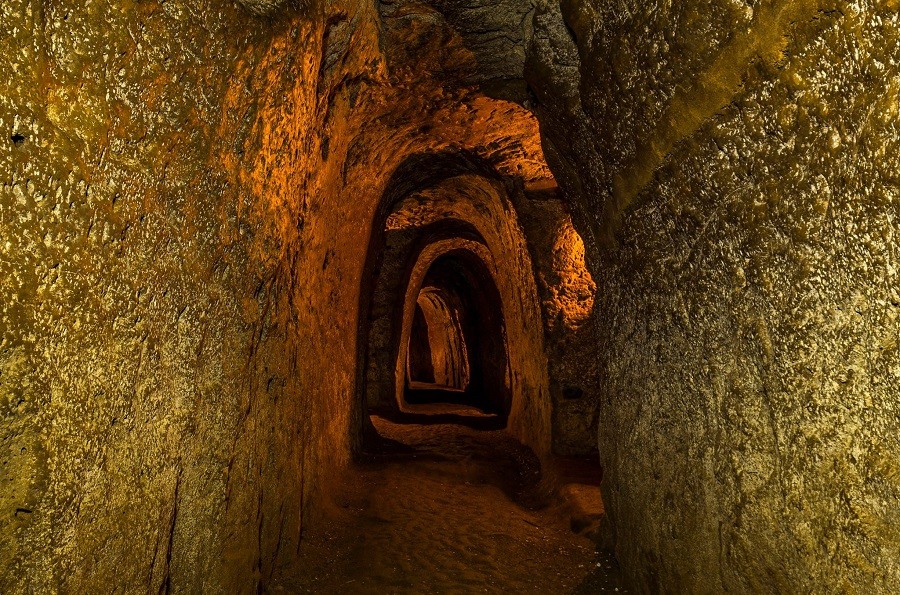 |
| Inside of Cu Chi Tunnels. Photo: Vinpearl |
They were built in the late 1940s during the French occupation of Vietnam and underwent intense U.S. bombardment in the 1960s.
Besides being the hustle and bustle of an economic hub, Ho Chi Minh City (Saigon) embraces historical vestiges appealing to both domestic and international tourists. Cu Chi Tunnels is one of the most significant relics of the city, offering first-hand experiences inside the massive underground cave and interesting insights into the lives of Vietnamese soldiers during the war.
Stretching to the Cambodian frontier, the system of Cu Chi tunnels used to reach a total length of nearly 250 kilometers, of which 120 kilometers have been well-preserved and available for public visit nowadays. The complex of Cu Chi Tunnels Saigon astounds visitors with its intricate architecture and resilience in the area of clay soil mixed with laterite.
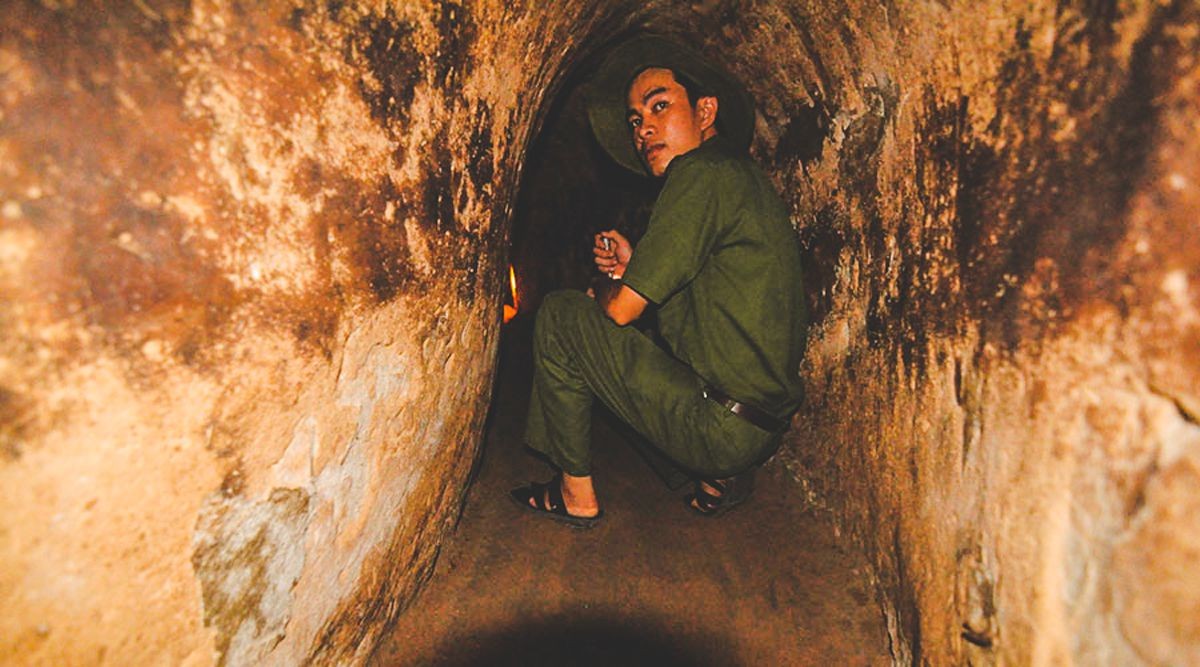 |
| Inside of Cu Chi tunnels. Photo: Local Vietnam |
On the ground level, there are hundreds of inventive booby traps and counterfeit bunkers set up to impale and deceive enemies. The entrances to these tunnels are so narrow that only Vietnamese could fit in, with wooden manhole covers camouflaged by leaves.
The underground part of the hidden system features three deep levels where numerous passages are connected through a central axis and extend to the Saigon River. The first level (3 meters underneath the ground) was capable of withstanding chemical warfare, bullets, tanks, and armored vehicles, whilst the second one (6 meters from the ground) could resist the destructive power of bombs. The third level is the deepest (more than 12 meters from the ground). Between the levels, escape hatches were made to counter toxic gas along with unrevealed vents leading to the ground. Communications passages were constructed 0.8~1.2 meters in size with a minimum 1.5 meter-thick roof.
A little-known fact about Cu Chi Tunnels is that Vietnamese soldiers excavated this immense underground network with hundreds of kilometer-long tunnels just by hand and primitive tools. The tunnels' inner structure is likened to a man-made underground city since it accommodated necessary facilities for a thousand soldiers and dwellers, such as kitchens, hospitals, schools, theaters, armories, chambers, and command centers.
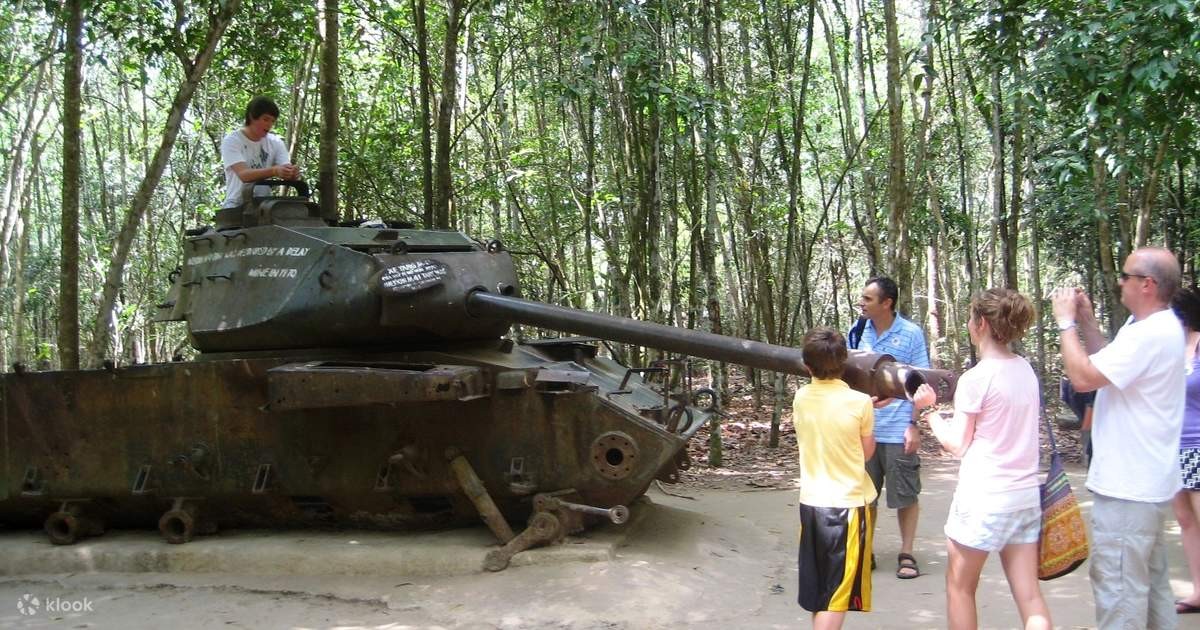 |
| Photo: Klook |
These areas reenact the fiercest period of war from 1961 to 1972 in South Vietnam, offering visitors vivid experiences as if they are traveling back in time. There are three sections on the site that reflect the enduring life of Vietnamese guerrilla soldiers and Cu Chi locals during wartime and the desolate village scenes ruined by toxic chemicals, artillery, and bombing raids.
Besides the underground experiences, the Tunnels of Cu Chi afford exciting military sports that fascinate many foreign tourists. Both Ben Dinh and Ben Duoc have shooting ranges, allowing participants to handle weapons used during the war, such as AK-47s and M16s, under the staff’s instructions.
In paintball shooting, players will be equipped with masks, uniforms, armor, and guns for their combat in the natural forest. These war simulator games will help you experience the shooting, team collaboration, and fighting spirit as soldiers of the past.
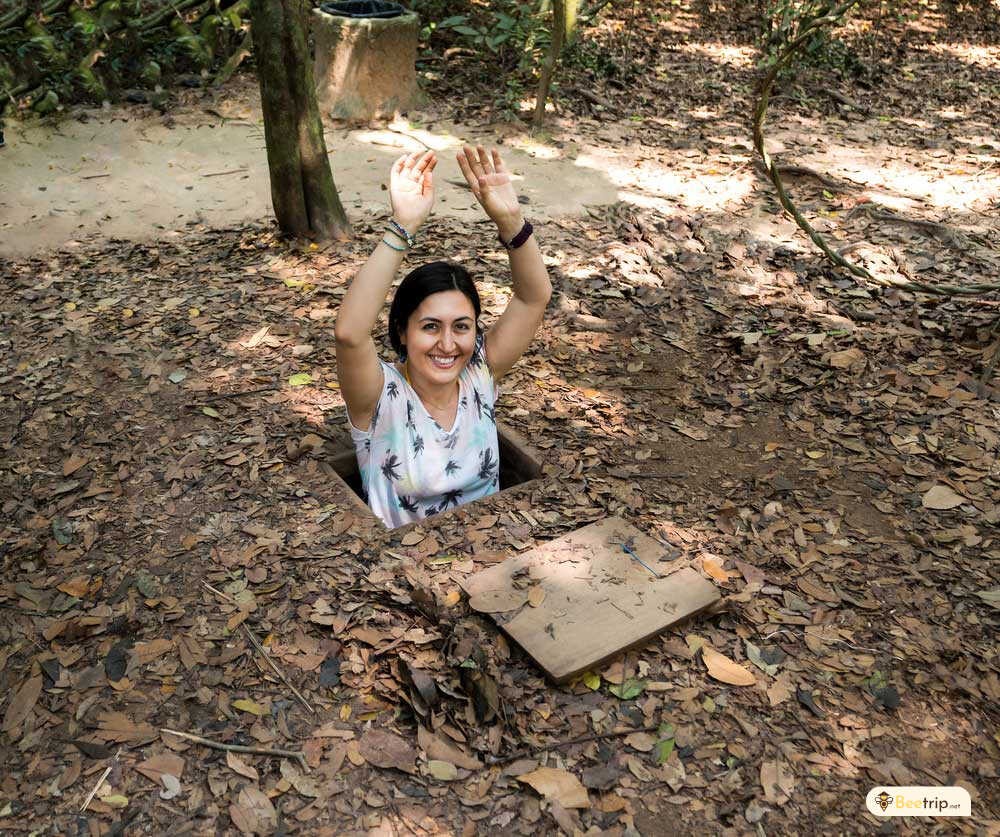 |
| The narrow entrance down to the tunnels. Photo: Beetrip |
Along with incredible historic destinations, the suburb district has emerged as a favorite spot for rustic but mouth-watering dishes. Cu Chi specialties have pleasant flavors made from local organic sources, which will satisfy your taste buds during your trip to Cu Chi Tunnels.
After a long journey to Cu Chi Tunnels, visitors will be treated to jasmine tea and boiled tapioca root with a mix of salted peanuts and sugar at the Hoang Cam kitchen. This simple dish was the staple food in Vietnamese fighters' diet that kept them surviving throughout the war.
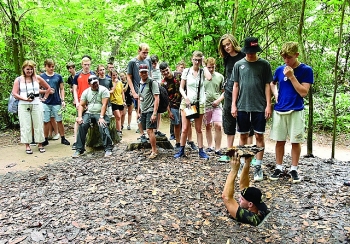 | Cu Chi underground tunnels site seeks UNESCO World Heritage Site recognition The People’s Committee of Ho Chi Minh City is working on a dossier seeking UNESCO World Heritage Site recognition for Cu Chi guerrilla warfare tunnels. |
 | Five Creative Spaces For Gen Z People In Ho Chi Minh City Being popular for its colorful and unique atmosphere, these creative spaces are loved by many young people and artists in Ho Chi Minh City. |
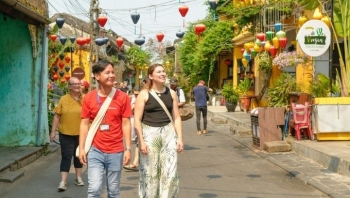 | Deutsche Welle: Vietnam Is Asia's Top Tourist Draws Reporter Tommy Walker from Deutsche Welle (Germany) claimed that Vietnam's spectacular landscapes and cultural diversity are putting the country on the list of the world's ... |
Recommended
 Travel
Travel
Strategies for Sustainable Growth of Vietnam’s Tourism from International Markets
 Travel
Travel
Vietnam Strengthens Its Presence On The Global Tourism Map
 Multimedia
Multimedia
Phong Nha-Ke Bang National Park Named Top Adventure Travel Site
 Travel
Travel
Luxury Train From Hanoi To Hai Phong To Be Launched In May
 Travel
Travel
Phong Nha Named Top Budget-Friendly Travel Destination for Spring 2025: Agoda
 Travel
Travel
Four Indian Films Introduced to Lao Cai Audience
 Travel
Travel
Vietnam to Waive Visas for Citizens from 12 Countries until 2028
 Travel
Travel


